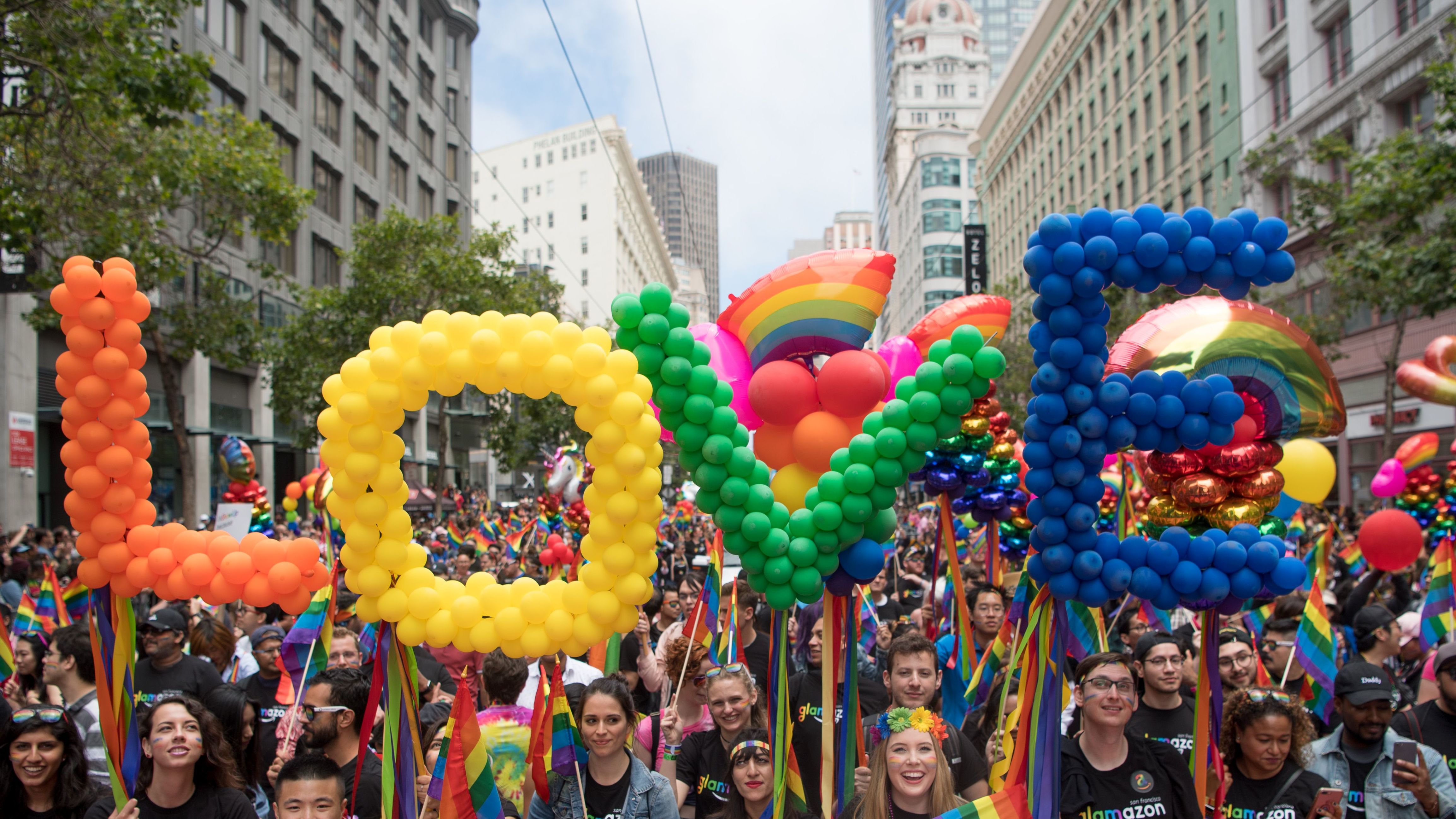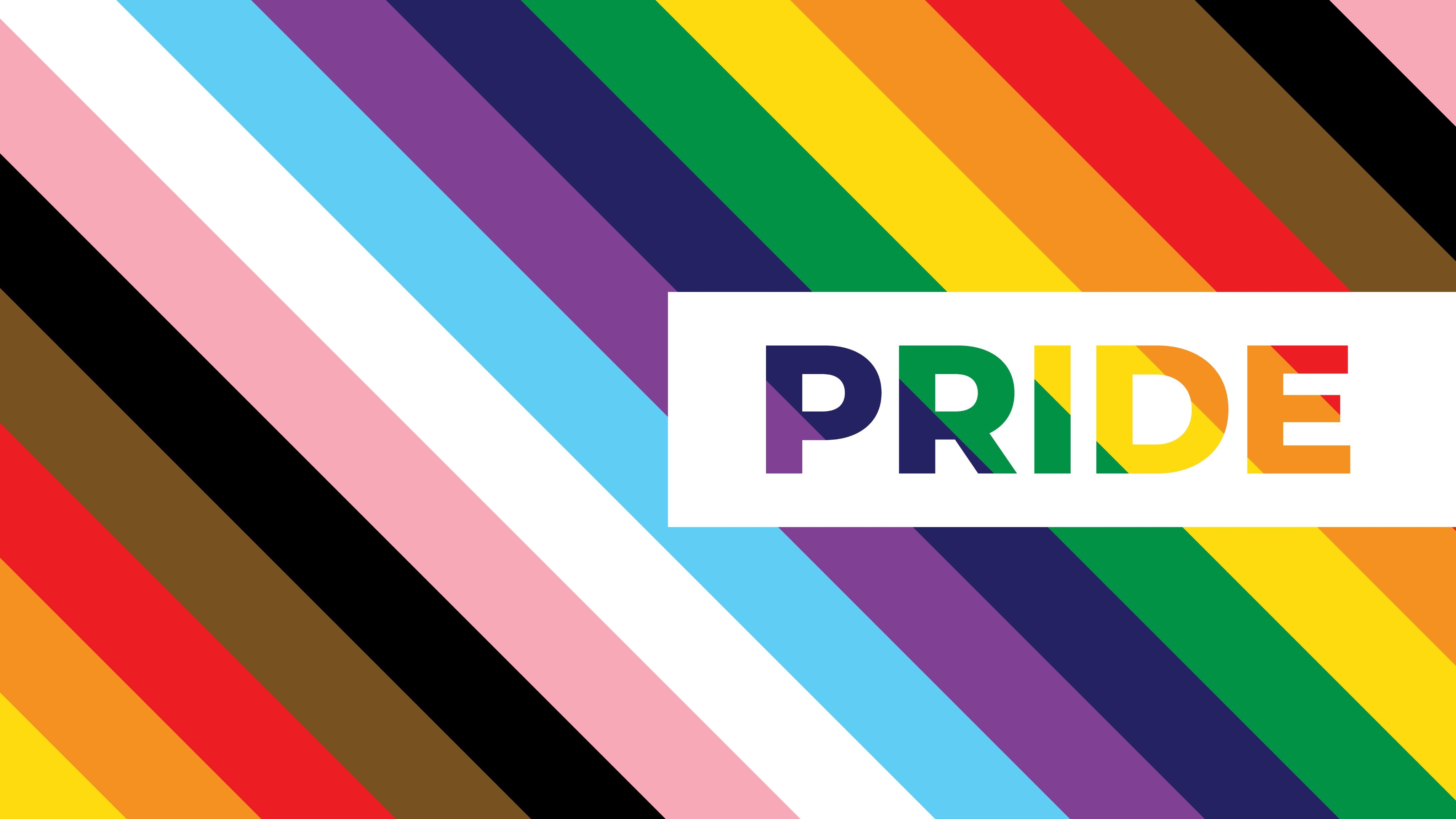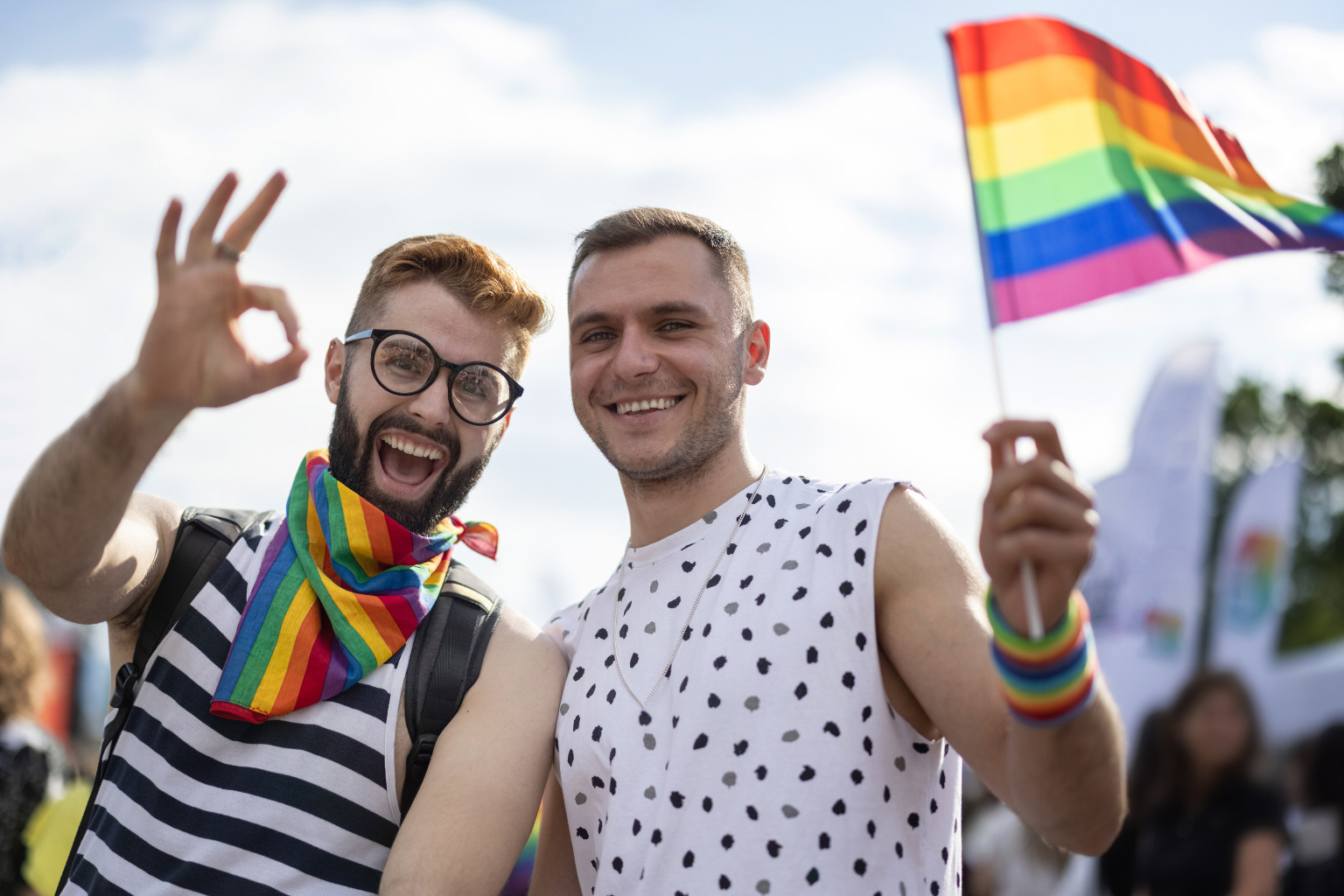Understanding Pride Month June: Its Roots, Meaning, And Celebration
As we step into June, it's almost like a special time begins, you know, a period that's really set aside each year to honor and celebrate the lesbian, gay, bisexual, transgender, and queer community. This whole stretch of weeks, it's often called Pride Month June, and it's a very important moment for so many people across the globe, actually. It's a time when, in a way, we collectively shine a light on the lives and experiences of LGBTQ+ individuals, recognizing their unique journeys and contributions, more or less.
You might be wondering, what exactly is LGBTQ+ Pride Month, anyway? Well, it's more than just a series of events; it's a deep dive into history, a celebration of culture, and a testament to the sheer resilience of a community that has, quite frankly, faced so much. It's about remembering where we've come from and looking at where we're going, you know, as a society that truly values everyone.
Here's everything you need to know about this significant time, from its very origins at a place called the Stonewall Inn in New York City, to the deeper meaning behind that instantly recognizable rainbow flag. It's a story that's very much about identity, about standing up for what's right, and about finding joy in who you are, which is that, just a little, quite a powerful idea.
- Mom And Dad Anniversary Quotes
- Is Bull Sperm In Red Bull
- Examples Of Introduction Letters To Parents From Teachers
- Japanese Fighting Fish Price
- Dragons From Norse Mythology
Table of Contents
- What is Pride Month June?
- The Deep Roots of Pride: A History Lesson
- The Meaning Behind the Rainbow Flag
- Pride as an Emotion and a Movement
- Celebrating Resilience and Contributions
- Current Conversations Around Pride Month June
- Embracing the Spirit of Pride Month June
- Frequently Asked Questions About Pride Month June
What is Pride Month June?
June 1 marks the beginning of Pride Month, you know, kicking off a whole celebration of lesbian, gay, bisexual, transgender, and queer history, culture, and their incredible resilience. It's a time that, in a way, reminds us of the many contributions made by the LGBTQ+ community to history, to society, and to cultures worldwide, more or less. This annual observance, it's pretty much a global acknowledgment of this vibrant community.
For many people, especially in places like the United States, Pride Month serves as a very important reminder of how crucial it is to support LGBTQ+ rights. It's about making sure we create environments where all identities are truly respected and valued, which is that, something everyone can agree on. It's a period for reflection, for celebration, and for continuing the work towards a world where everyone can feel safe and accepted, you know, for who they are.
The Deep Roots of Pride: A History Lesson
The history and the very origins of Pride Month actually go back quite a ways, all the way to the 1960s. It might, you know, frankly shock you to learn how Pride Month really began, why that iconic rainbow flag was created, and so much more. It's a story that's very much rooted in a specific moment that changed everything for the LGBTQ+ rights movement, you know, in a rather profound way.
- The Weekend Before And After Surgery
- Jennifer Love Hewitt Body Measurements
- Is Lulu Leaving General Hospital
- Who Is 2pacs Daughter
- Bible Quote About Flowers
The Stonewall Uprising: Where it All Began
Pride Month, as we celebrate it today, traces its roots back to the 1969 Stonewall Riots, you know, a series of spontaneous demonstrations by members of the gay community. These events, they really started in the early hours of June 28, 1969, after police raided the Stonewall Inn, which was a gay bar located in the Greenwich Village neighborhood of Manhattan, as a matter of fact. This raid, it was just one of many, but this time, the community fought back, which was that, a turning point.
The Stonewall uprising, it commemorates this pivotal moment, you know, when people stood up for their rights and for their dignity. It's a powerful reminder that the path to equality has often involved brave acts of resistance. Heritage of Pride, an organization, works toward a future without discrimination, where all people have equal rights under the law, and they do this by producing LGBTQIA+ pride events that inspire, educate, and, you know, really bring people together.
A Political Event From the Start
Since its very beginning, Pride has, in fact, been a political event. And although it may feel like a party today, with all the parades and celebrations, protests have always been embedded in its very reason for existing, you know, as a movement. It's not just about having fun; it's about advocating for rights, about demanding acceptance, and about making sure that the voices of the LGBTQ+ community are heard, which is that, a really important aspect of it.
The festive atmosphere we often see at Pride events, it's a celebration of progress, to be honest, but it also stands as a very visible act of protest against ongoing discrimination and inequality. It’s a powerful statement of visibility and collective strength, showing that the community is here, it’s proud, and it will continue to push for full equality, you know, until everyone has it.
The Meaning Behind the Rainbow Flag
When you think of Pride Month June, one of the first things that probably comes to mind is that vibrant rainbow flag, isn't that right? This flag, it's become a nearly universal symbol of LGBTQ+ pride and movements, but its creation and its meaning are very much tied to the history of the community. Each color, it actually represents something specific, contributing to the overall message of diversity and hope, more or less.
The rainbow flag, you know, it was created to be a symbol of unity and visibility for the LGBTQ+ community. It’s a visual representation of the broad spectrum of identities and experiences within the community, aiming to include everyone under its colorful embrace. It’s a powerful emblem that, in a way, communicates acceptance and celebrates the beauty of difference, which is that, a truly wonderful idea.
Pride as an Emotion and a Movement
The word "pride" itself, it carries a lot of weight, doesn't it? It's a human secondary emotion, characterized by a sense of satisfaction with one's identity, performance, or accomplishments, as a matter of fact. It's often considered the opposite of shame or humility, you know, a feeling of self-worth and dignity. When we talk about Pride Month, we're talking about this emotion on a collective scale, basically.
Think about it: these young people are the pride of their community, or our children are our pride and joy. The car is his pride and joy. Or, the Nobel Prize winner was given pride of place at the conference. These phrases, they show how we use the word "pride" to convey something deeply valued, something cherished, something that brings a great sense of satisfaction and honor. This very feeling is at the core of Pride Month, allowing individuals to openly express satisfaction with who they are, which is that, a fundamental human right, really.
The movement, you know, it’s about reclaiming that feeling for a community that was historically, and sometimes still is, made to feel shame. It's about transforming that negative experience into a powerful affirmation of self-worth and collective strength. It’s about saying, quite simply, that we are here, we are valuable, and we are proud, you know, of who we are.
Celebrating Resilience and Contributions
Pride Month is an annual celebration of the many contributions made by the LGBTQ+ community to history, society, and cultures worldwide, you know, across various fields. From art and science to politics and social justice, LGBTQ+ individuals have shaped our world in countless ways, often against significant odds. This month, it's a chance to highlight these achievements and acknowledge the profound impact of their work, basically.
It's also, very much, a celebration of resilience. The journey of the LGBTQ+ community has been marked by struggle, by adversity, and by a constant fight for basic human rights. Pride Month, it serves as a powerful reminder of the strength and determination that have allowed the community to overcome challenges and continue pushing for a more just and equitable world, which is that, a truly inspiring story.
In most places, pride is celebrated, you know, with parades, festivals, educational events, and community gatherings. These events create spaces for joy, for solidarity, and for visibility, allowing people to connect, to share their stories, and to feel a sense of belonging. It's a time when the community, and its allies, come together to affirm their identities and to advocate for continued progress, more or less.
Current Conversations Around Pride Month June
Even as Pride is celebrated widely, there are still ongoing conversations and, frankly, challenges. You know, just recently, there was news about the head of a parliament banning the rainbow flag from a legislative building. And, in a very specific instance, Delray Beach was removing its rainbow intersection, which had just been repainted to mark the beginning of LGBTQ+ Pride Month in June. Delray Beach is, in a way, the latest city to respond to an issue like this, basically.
These instances, they serve as a stark reminder that the fight for full acceptance and equality is far from over, you know, even today. They highlight the importance of continued advocacy and the need for vigilance in protecting the rights and visibility of the LGBTQ+ community. Pride Month, then, becomes even more vital as a time to reaffirm these values and to stand up against acts of discrimination, which is that, something we all need to think about.
It shows that while much progress has been made, there's still work to do to ensure that all people have equal rights under the law and that all identities are truly respected and valued, you know, everywhere. It underscores why the origins of Pride as a protest are still very relevant, and why the celebrations continue to carry a powerful message of advocacy and perseverance, pretty much.
Embracing the Spirit of Pride Month June
As we observe Pride Month June, it's a wonderful opportunity for everyone to reflect on the rich history and vibrant culture of the LGBTQ+ community. It’s a chance to learn more about the struggles and triumphs that have shaped this movement, and to understand the profound meaning behind its symbols, like the rainbow flag, you know, in a deeper way. This period, it really encourages us to consider what it means to create a truly inclusive society, one where everyone feels safe and celebrated for who they are.
Supporting LGBTQ+ rights and creating inclusive environments where all identities are respected and valued, you know, that's not just for the community itself; it benefits all of us. It strengthens the fabric of our society, making it richer and more diverse. So, whether you're attending a local event, learning more about the history, or simply reflecting on the importance of acceptance, this month is a powerful reminder of the ongoing journey towards equality and understanding. You can discover ways to support LGBTQ+ rights and be a part of this important movement, too it's almost, in your own way. For more historical context on the Stonewall Uprising, you might find valuable information from reputable sources like the National Park Service, which is that, a great place to start: National Park Service - Stonewall.
Frequently Asked Questions About Pride Month June
Why is Pride Month celebrated in June?
Pride Month is celebrated annually in June, you know, to honor the 1969 Stonewall Riots. These riots, they began in the early hours of June 28, 1969, after police raided the Stonewall Inn, which was a gay bar in Manhattan. This event, it's considered a major turning point in the fight for LGBTQ+ rights, basically, so the month is dedicated to commemorating that moment and the ongoing struggle for equality.
What does LGBTQ+ stand for?
LGBTQ+ is an acronym that stands for lesbian, gay, bisexual, transgender, and queer, you know, as a matter of fact. The plus sign, it's often included to represent other identities within the community that are not specifically covered by the initial letters, like intersex or asexual individuals, to be honest. It's an evolving term, reflecting the broad and diverse nature of sexual orientations and gender identities, more or less.
What is the meaning behind the rainbow flag?
The rainbow flag, you know, it's a very recognizable symbol of LGBTQ+ pride and social movements. It was created to symbolize the diversity of the LGBTQ+ community, with each color representing a different aspect of life. For example, pink often stands for sex, red for life, orange for healing, yellow for sunlight, green for nature, turquoise for magic/art, indigo for serenity, and violet for spirit. It's a powerful visual representation of unity and inclusion, basically, for all identities.
- Examples Of Introduction Letters To Parents From Teachers
- People On Gutfeld
- Does Kevin Durant Have A Twin Brother
- Dylan Dreyer Pay
- Is Brittney Griner A Man Or Woman

Pride - SheerinDrimit

Pride Month Wallpapers - LGBTQ+ Backgrounds

Why we still need Pride in 2023 – Inclusive Employers